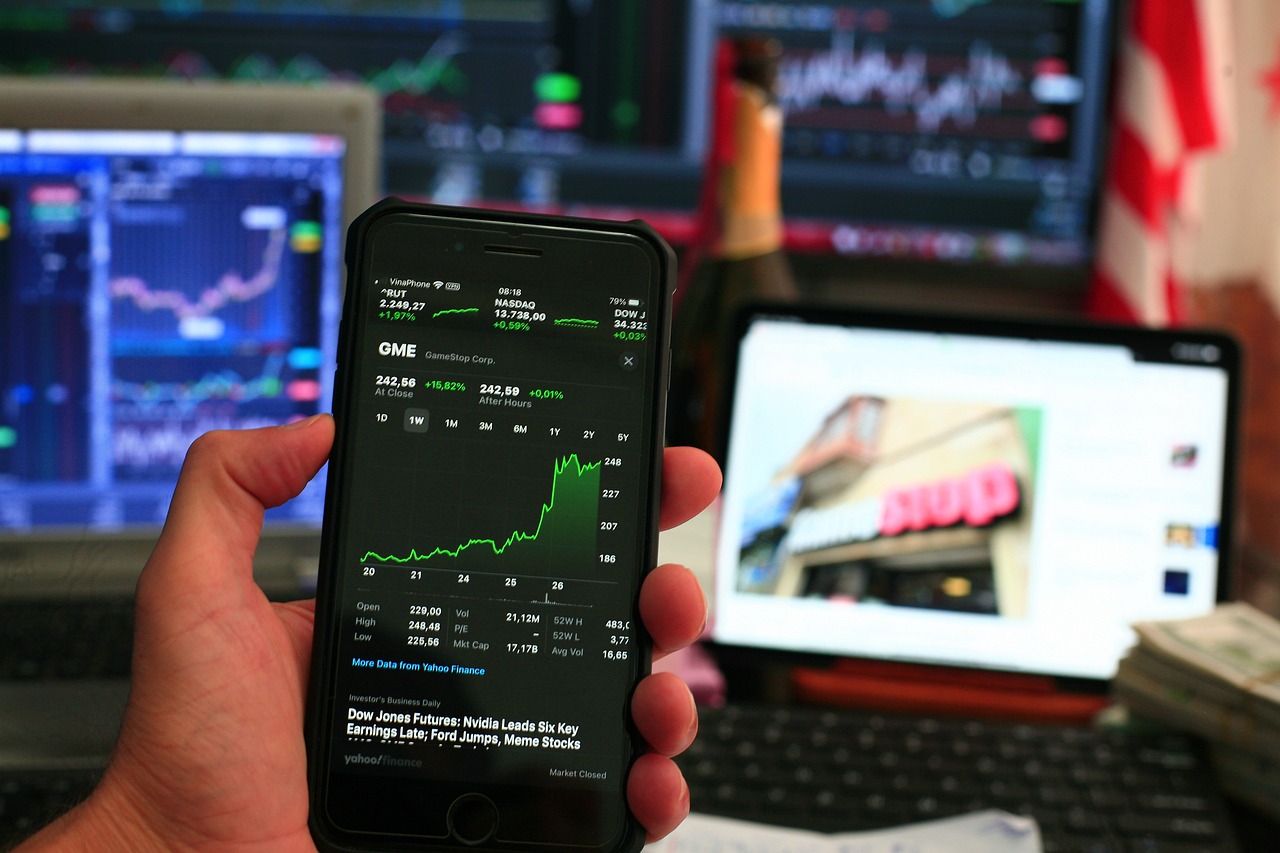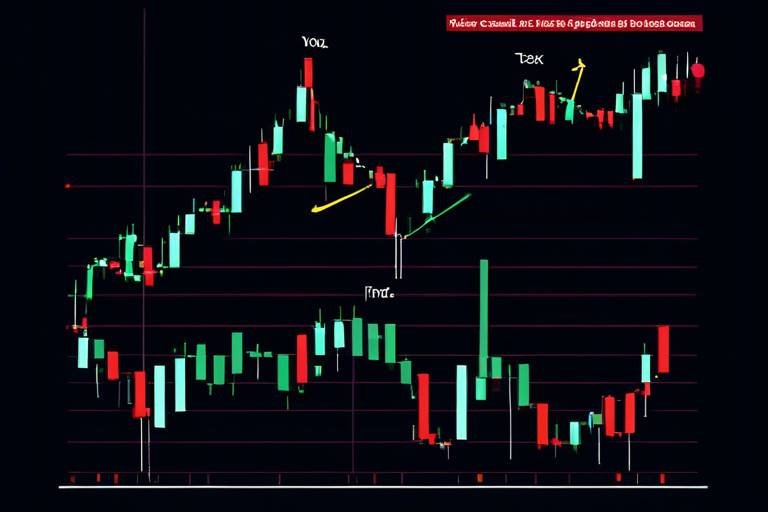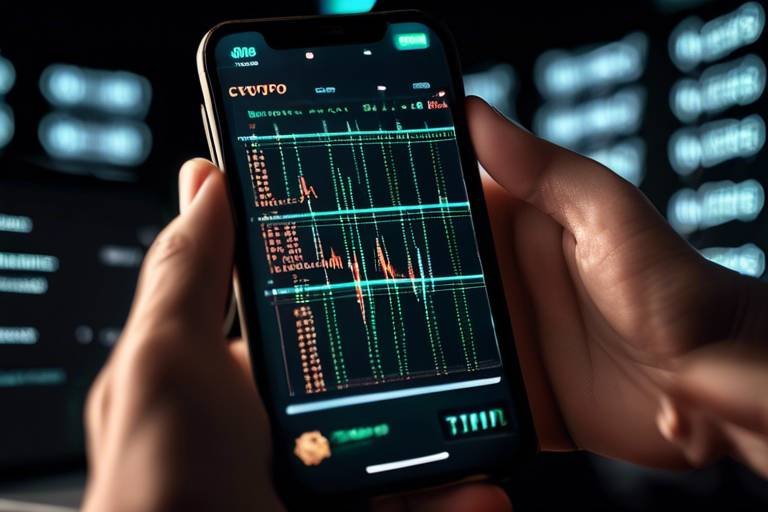Using Candlestick Patterns for Better Trading Decisions
Trading in financial markets can often feel like navigating a labyrinth. With prices fluctuating wildly, how do you make sense of it all? Enter candlestick patterns—your guiding light in this complex world. These visual tools not only represent price movements but also encapsulate the market's emotions and sentiments. By understanding candlestick patterns, you can enhance your decision-making process and potentially increase your trading success. This article explores the significance of these patterns, diving into their interpretations and how they can empower traders like you to make informed choices.
Before we delve into the various patterns, it’s essential to grasp the basics of candlestick charts. A candlestick is composed of four key components: the open, close, high, and low prices during a specific time frame. The body of the candlestick represents the range between the open and close prices, while the wicks (or shadows) indicate the high and low prices reached during that period. This visual representation provides traders with a snapshot of market sentiment—whether buyers or sellers are in control. Understanding these components is crucial for interpreting the patterns that emerge on the charts.
As you become familiar with candlestick basics, it’s time to explore the major patterns that can influence your trading decisions. These patterns can be broadly categorized into two types: single candlestick patterns and multiple candlestick patterns. Recognizing these patterns can provide you with insights into potential market direction and reversals. Let’s take a closer look at some of the most significant patterns you should be aware of.
Single candlestick patterns are powerful indicators that can quickly convey market sentiment. They often signal potential reversals or continuations in the market. Two notable examples are the doji and the shooting star. Each of these patterns tells a unique story about market dynamics.
The doji pattern is characterized by a small body with long wicks, indicating indecision in the market. When you see a doji, it suggests that buyers and sellers are in a stalemate, and a potential reversal could be on the horizon. Identifying a doji can be as simple as looking for a candlestick where the open and close prices are nearly equal. This pattern is particularly significant when it appears at the end of a trend, signaling a possible shift in momentum.
On the other hand, the shooting star pattern is a bearish reversal signal. It typically appears after an upward price movement and features a small body at the lower end of the trading range with a long upper wick. This pattern indicates that buyers attempted to push the price higher, but sellers stepped in, driving the price back down. Recognizing a shooting star can help traders make informed decisions about entering short positions or setting stop-loss orders to protect their investments.
Moving beyond single candlestick patterns, we encounter multiple candlestick patterns, which involve two or more candlesticks. These patterns provide a deeper insight into market trends and can signal stronger reversal or continuation signals. Examples include the engulfing pattern and the harami pattern, each offering unique interpretations of market sentiment.
Understanding how to interpret candlestick patterns is crucial for effective trading. These patterns are not just random shapes; they reflect the psychological factors at play in the market. Traders' emotions—fear, greed, and uncertainty—are all captured in these candlesticks, and recognizing these psychological cues can enhance your trading strategy.
Market psychology plays a vital role in interpreting candlestick patterns. For instance, a doji appearing after a strong uptrend may indicate that buyers are losing momentum, while a shooting star after a rally can signal that sellers are gaining control. Understanding the emotional undercurrents driving these patterns can provide you with a competitive edge in trading.
While candlestick patterns are powerful tools, relying solely on them can be risky. This is where confirmation signals come into play. By using volume and additional indicators—such as moving averages or the Relative Strength Index (RSI)—you can enhance the reliability of candlestick patterns. For example, if a bullish engulfing pattern appears alongside increasing volume, it strengthens the case for a potential upward move.
To truly harness the power of candlestick patterns, it’s essential to integrate them into your trading strategies. This means combining candlestick analysis with other technical tools to create a comprehensive trading plan. By doing so, you can improve your decision-making and increase your chances of success in the markets.
Using technical indicators alongside candlestick patterns can provide a more robust view of market conditions. Popular indicators like moving averages and RSI can help confirm signals generated by candlestick patterns. For instance, if a candlestick pattern suggests a bullish reversal, and the RSI indicates that the asset is oversold, the combination can strengthen your confidence in entering a trade.
Finally, effective risk management is essential for successful trading. Setting stop-loss orders and determining proper position sizing are crucial steps when using candlestick patterns for trading decisions. By managing your risk, you protect your capital and ensure that a single loss doesn’t derail your trading journey.
- What are candlestick patterns?
Candlestick patterns are visual representations of price movements that indicate market sentiment and potential future price movements.
- How can I use candlestick patterns in trading?
You can use candlestick patterns to identify potential reversals or continuations in the market, helping you make informed trading decisions.
- Are candlestick patterns reliable?
While candlestick patterns can provide valuable insights, they should be used in conjunction with other technical indicators and risk management strategies for better results.

Understanding Candlestick Basics
Candlestick charts are a powerful tool in the arsenal of traders, offering a visual representation of price movements that can illuminate market sentiment like a lighthouse in the fog. At their core, candlesticks are composed of four key components: the open, close, high, and low prices. Each candlestick represents a specific time frame, whether it be a minute, an hour, a day, or even a week. This time frame is crucial, as it can dramatically affect the interpretation of the candlestick patterns.
To break it down further, let’s look at what these components mean:
- Open: This is the price at which a security starts trading during a specific time frame.
- Close: This is the price at which a security finishes trading during that time frame.
- High: This indicates the highest price reached during the time frame.
- Low: This shows the lowest price reached during that same time frame.
When you visualize these components, a candlestick forms a "body" and "wicks." The body is the area between the open and close prices, while the wicks (or shadows) extend from the body to the high and low prices. If the close price is higher than the open price, the body is typically filled with a lighter color (like green or white), indicating bullish sentiment. Conversely, if the close is lower than the open, the body might be filled with a darker color (like red or black), signaling bearish sentiment.
Understanding these basics is crucial because they set the foundation for interpreting various candlestick patterns that can indicate potential market movements. For instance, a long body and short wicks suggest strong buying or selling pressure, while a small body with long wicks indicates indecision among traders. This indecision can signal potential reversals or continuations in market trends.
In summary, mastering the basics of candlestick patterns not only enhances your trading skills but also empowers you to make informed decisions based on market sentiment. By paying close attention to the open, close, high, and low prices, you can start to decipher the intricate dance of buyers and sellers in the financial markets.

Major Candlestick Patterns
Candlestick patterns are the heart of technical analysis, providing traders with a visual representation of market sentiment and potential price movements. Understanding these patterns is crucial for making informed trading decisions. Among the myriad of patterns, some stand out due to their frequency and reliability. In this section, we will delve into the major candlestick patterns that every trader should recognize. These patterns include the Doji, Hammer, and Engulfing patterns, each with its unique implications for market direction.
The Doji pattern is particularly intriguing. It occurs when the opening and closing prices are virtually the same, resulting in a candlestick that resembles a cross. This pattern signifies indecision among traders and can indicate a potential reversal in the current trend. For example, if a Doji appears after a strong upward trend, it may suggest that buyers are losing momentum, and a reversal could be on the horizon. Conversely, a Doji following a downtrend may indicate that sellers are starting to lose control.
Next, we have the Hammer pattern, which is a single candlestick pattern typically found at the bottom of a downtrend. It has a small body with a long lower shadow, indicating that sellers pushed prices lower during the session, but buyers stepped in to push the price back up near the opening level. This pattern suggests that buyers are gaining strength and can signal a potential bullish reversal. Traders often look for confirmation from subsequent candles to validate this pattern before making a trading decision.
Another significant pattern is the Engulfing pattern, which consists of two candlesticks. The first candle is a smaller body, while the second candle completely engulfs the first. A bullish engulfing pattern occurs after a downtrend, signaling that buyers have taken control, while a bearish engulfing pattern appears after an uptrend, indicating that sellers are now dominant. The engulfing pattern is particularly powerful as it reflects a strong shift in market sentiment and can serve as a reliable indicator for traders looking to enter or exit positions.
In summary, recognizing these major candlestick patterns can significantly enhance a trader's ability to predict market movements. By understanding the implications of Doji, Hammer, and Engulfing patterns, traders can make more informed decisions and potentially improve their trading outcomes. However, it’s essential to remember that no pattern is foolproof; thus, combining candlestick analysis with other technical indicators and sound risk management practices is crucial for success in the trading arena.
- What is the significance of candlestick patterns? Candlestick patterns help traders gauge market sentiment and potential price movements, allowing for more informed trading decisions.
- How can I identify a Doji pattern? A Doji pattern is identified by a candlestick where the opening and closing prices are nearly the same, resulting in a cross-like appearance.
- What does a Hammer pattern indicate? A Hammer pattern suggests a potential bullish reversal, indicating that buyers are gaining strength after a downtrend.
- What is the difference between a bullish and bearish engulfing pattern? A bullish engulfing pattern occurs after a downtrend, indicating a shift to buying pressure, while a bearish engulfing pattern appears after an uptrend, signaling increased selling pressure.

Single Candlestick Patterns
When it comes to trading, understanding can be a game changer. These patterns are like quick snapshots of market sentiment, offering traders immediate insights into potential price movements. Each candlestick represents a specific time frame and provides critical information about the price action within that period. Among the most notable single candlestick patterns, we have the doji and the shooting star, both of which can signal significant market shifts.
The doji pattern is particularly fascinating. It appears when the opening and closing prices are nearly the same, resulting in a small body with long wicks. This indicates a struggle between buyers and sellers, representing indecision in the market. Traders often interpret a doji as a potential reversal signal, especially after a strong trend. It’s essential to consider the context in which the doji appears; for example, if it shows up after a prolonged uptrend, it might suggest that the bulls are losing their grip, and a correction could be on the horizon.
On the flip side, the shooting star pattern is a strong bearish reversal indicator. It forms after an uptrend and features a small body at the lower end of the trading range, with a long upper wick. This pattern suggests that buyers pushed the price higher during the session, but sellers stepped in and drove it back down, indicating a potential shift in momentum. Recognizing this pattern can help traders make informed decisions about entering short positions or setting stop-loss orders.
In addition to these two, there are other single candlestick patterns worth noting, such as the hammer and the inverted hammer. The hammer appears at the bottom of a downtrend and signals a potential bullish reversal, while the inverted hammer shows up at the top of an uptrend and can indicate a bearish reversal. Understanding these patterns and their implications can significantly enhance a trader's decision-making process.
Ultimately, mastering single candlestick patterns is about more than just recognizing shapes on a chart; it's about understanding the psychology behind them. Each pattern tells a story about the emotions driving the market—fear, greed, indecision—allowing traders to anticipate potential market movements. By integrating these patterns into your trading strategy, you can enhance your ability to make timely and informed decisions.
- What is a doji pattern? A doji pattern signifies indecision in the market, where the opening and closing prices are nearly the same.
- How can I identify a shooting star? A shooting star has a small body at the lower end of the range and a long upper wick, typically forming after an uptrend.
- Why are single candlestick patterns important? They provide quick insights into market sentiment and can signal potential reversals in price trends.

Doji Patterns
The doji pattern is one of the most intriguing formations in candlestick analysis, as it signifies a moment of indecision in the market. Imagine a tug-of-war between buyers and sellers, where neither side can claim victory. This scenario is visually represented by a doji candlestick, which has an open and close price that are virtually equal, creating a small body with long shadows on either side. The presence of a doji can indicate a potential reversal or a continuation of the current trend, depending on the context in which it appears.
Identifying a doji pattern is relatively straightforward. Traders look for candlesticks with small bodies and long wicks, which can appear in various shapes, including the classic doji, long-legged doji, and gravestone doji. Each variation carries its own implications:
- Classic Doji: Indicates indecision, appearing at the top or bottom of a trend.
- Long-Legged Doji: Suggests heightened uncertainty, with long upper and lower shadows.
- Gravestone Doji: Signals a potential bearish reversal, characterized by a long upper shadow and no lower shadow.
Traders often look for doji patterns at key support and resistance levels, as these points can amplify the significance of the doji. For instance, if a doji forms after a strong uptrend near a resistance level, it could indicate that buyers are losing momentum, suggesting a possible reversal. Conversely, if a doji appears after a downtrend at a support level, it may signal that sellers are losing strength, hinting at a potential upward movement.
However, it's essential to remember that a doji alone does not guarantee a market reversal. It's crucial to consider other factors, such as the overall trend and volume. For instance, a doji followed by a confirmation candlestick, such as a bullish engulfing pattern, can provide stronger evidence of a reversal. Thus, combining doji patterns with other technical indicators and analysis can enhance their effectiveness in trading decisions.
In summary, the doji pattern serves as a powerful tool for traders, offering insights into market sentiment and potential price movements. By recognizing the nuances of this pattern and its implications, traders can make more informed decisions and improve their overall trading strategies.

Shooting Star Patterns
The shooting star pattern is a powerful candlestick formation that traders often watch for as a signal of potential market reversal. It typically appears after a bullish price movement, suggesting that the tide may be turning. Imagine a star shooting across the sky, only to fade away; this is essentially what the shooting star signifies in trading terms. It indicates that buyers have attempted to push prices higher, but sellers have stepped in to push them back down, creating a scenario where indecision reigns.
To identify a shooting star, look for a candlestick with a small body located at the lower end of the trading range, accompanied by a long upper shadow. This upper shadow should be at least twice the length of the body, which highlights the struggle between buyers and sellers. The longer the shadow, the more significant the rejection of higher prices becomes. When you spot this pattern, it's crucial to be cautious—this could be the beginning of a bearish trend.
Here's a quick breakdown of the characteristics of a shooting star pattern:
| Characteristic | Description |
|---|---|
| Location | Occurs after an uptrend |
| Body Size | Small body, typically red or green |
| Upper Shadow | Long upper shadow, at least twice the body length |
| Lower Shadow | Little to no lower shadow |
When trading the shooting star pattern, it's essential to consider the context in which it appears. A shooting star that forms at a significant resistance level can be particularly telling, as it suggests that buyers are losing their grip. However, traders should not rely solely on this pattern for their decisions. It's always wise to look for confirmation through subsequent price action or other technical indicators.
For instance, if you see a shooting star followed by a bearish candlestick, it can provide stronger evidence of a potential reversal. Conversely, if the next candlestick is bullish, it may indicate that the shooting star was a false signal, and the uptrend could continue. Thus, combining candlestick analysis with other tools like volume indicators or moving averages can enhance your trading strategy and decision-making process.
In summary, the shooting star pattern serves as a crucial alert for traders who are keen on identifying potential reversals in the market. By understanding its characteristics and the psychology behind it, you can better navigate the often turbulent waters of trading. Remember, the market is always full of surprises, and being equipped with the right knowledge can make all the difference.
- What does a shooting star pattern indicate? A shooting star pattern indicates a potential bearish reversal after a price uptrend.
- How can I confirm a shooting star pattern? Look for confirmation through subsequent bearish candlesticks or other technical indicators like volume.
- Is the shooting star pattern always reliable? No pattern is foolproof; the shooting star should be used in conjunction with other analysis tools for better accuracy.

Multiple Candlestick Patterns
When it comes to trading, understanding the nuances of can be a game changer. These patterns, formed by two or more candlesticks, provide deeper insights into market trends and potential reversals. Unlike single candlestick patterns that offer quick glimpses into market sentiment, multiple candlestick patterns are like a story unfolding before your eyes, revealing the underlying emotions of traders and the overall market dynamics.
One of the most well-known multiple candlestick patterns is the engulfing pattern. This occurs when a smaller candlestick is completely engulfed by a larger candlestick of the opposite color. For example, a bullish engulfing pattern forms when a small bearish candle is followed by a larger bullish candle. This pattern signifies a potential reversal from a downtrend to an uptrend, as it indicates that buyers are gaining control. Traders often look for this pattern at significant support levels, enhancing its reliability.
Another important pattern is the harami, which translates to "pregnant" in Japanese. A harami consists of two candles: a large candlestick followed by a smaller candlestick that is contained within the body of the first candle. This pattern can signal indecision in the market, suggesting that a reversal may be on the horizon. For instance, a bullish harami appears when a large bearish candle is followed by a smaller bullish candle, hinting that buyers may be stepping in. Understanding these patterns can help traders anticipate market movements and adjust their strategies accordingly.
To enhance your trading strategy, it’s crucial to combine the identification of these patterns with other indicators. For example, you might notice an engulfing pattern forming on the chart and simultaneously check the relative strength index (RSI) to see if the market is overbought or oversold. This combination can provide a more comprehensive view of the market, increasing your chances of making informed trading decisions.
In summary, multiple candlestick patterns offer traders valuable insights into market sentiment and potential price movements. By learning to recognize patterns like the engulfing and harami, traders can better position themselves to capitalize on market opportunities. Remember, the key is not just to identify these patterns but to understand their implications in the context of overall market dynamics.
- What is the significance of multiple candlestick patterns? Multiple candlestick patterns provide deeper insights into market trends and potential reversals, helping traders make informed decisions.
- How do I identify an engulfing pattern? An engulfing pattern occurs when a smaller candlestick is completely engulfed by a larger candlestick of the opposite color, indicating a potential reversal.
- What does a harami pattern signify? A harami pattern signals indecision in the market and can suggest a potential reversal, especially when combined with other indicators.
- Can I use multiple candlestick patterns with other technical indicators? Yes! Combining candlestick patterns with indicators like RSI or moving averages can provide a more comprehensive analysis of market conditions.

Interpreting Candlestick Patterns
Understanding how to interpret candlestick patterns is crucial for effective trading. These patterns are not just random shapes on a chart; they are visual representations of market psychology and trader sentiment. When you look at a candlestick chart, you're essentially peering into the collective emotions of all market participants at a given time. This emotional backdrop can often signal potential price movements, making it essential for traders to grasp the underlying psychology.
One of the most fascinating aspects of candlestick patterns is how they reflect the battle between buyers and sellers. For instance, a long-bodied candle indicates strong buying or selling pressure, while a small-bodied candle suggests indecision. Recognizing these subtle cues can help traders anticipate market direction. Moreover, the context in which these patterns appear is equally important. A bullish engulfing pattern at the end of a downtrend, for example, can serve as a powerful indicator that the tide is turning.
To effectively interpret these patterns, traders often look for confirmation signals. This means verifying the pattern with additional indicators or volume analysis. For instance, if a trader spots a doji followed by a significant increase in volume, it could suggest that the market is indeed ready for a reversal. On the other hand, a doji without confirmation may simply indicate ongoing indecision. Therefore, integrating volume analysis into your candlestick interpretation can significantly enhance your trading strategy.
Additionally, it's essential to consider the broader market context. Are there any major news events or economic data releases that could impact market sentiment? Understanding the fundamental factors at play can provide valuable insights that complement candlestick analysis. For example, if you see a bullish pattern forming but the market is reacting negatively to economic news, it may be wise to exercise caution.
In summary, interpreting candlestick patterns is not merely about recognizing shapes; it's about understanding the story behind those shapes. By considering market psychology, confirmation signals, and the broader context, traders can make more informed decisions. The beauty of candlestick analysis lies in its ability to blend technical and psychological insights, allowing traders to navigate the often tumultuous waters of financial markets with greater confidence.
- What are candlestick patterns? Candlestick patterns are visual representations of price movements in a specific time frame, indicating market sentiment and potential future price action.
- How do I identify a candlestick pattern? Look for specific formations in the candlestick chart, such as dojis, hammers, or engulfing patterns, and consider their context within the overall trend.
- Can candlestick patterns predict future price movements? While they can provide insights into market sentiment, they should be used in conjunction with other analysis techniques for better accuracy.
- What role does volume play in candlestick analysis? Volume can confirm the strength of a candlestick pattern; higher volume on a breakout or reversal can indicate that the pattern is more likely to hold.

Market Psychology
Market psychology is a fascinating aspect of trading that delves into the emotional and psychological factors influencing traders’ decisions. Understanding market psychology is crucial because it can often dictate price movements more than fundamental analysis. Think of it this way: the market is like a living organism, responding to the collective emotions of its participants. When traders feel confident, prices tend to rise, but when fear sets in, prices can plummet.
One of the key emotions driving market psychology is fear. When traders fear losses, they may make impulsive decisions, such as selling off assets at a loss. Conversely, greed can lead to overconfidence, causing traders to hold onto winning positions longer than they should, ultimately risking their profits. The balance between these emotions is what creates volatility in the market, making it essential for traders to recognize and manage their emotional responses.
To better understand market psychology, consider the following psychological cues that can impact trading decisions:
- Herd Behavior: Traders often follow the crowd, leading to trends that can amplify price movements.
- Confirmation Bias: Traders may favor information that supports their existing beliefs, ignoring contrary evidence.
- Overreaction: The tendency to react strongly to news or events can lead to exaggerated price swings.
Recognizing these psychological factors can help traders make more informed decisions. For instance, when a doji pattern appears on a candlestick chart, it may indicate indecision in the market. Traders should consider this alongside their emotional state; if they are feeling anxious, they might be more likely to interpret the doji as a signal to exit a position prematurely. On the other hand, if they are calm and rational, they might see it as an opportunity to analyze further before making a move.
Moreover, understanding market psychology can enhance the effectiveness of candlestick patterns. For instance, if a trader notices a shooting star pattern after a significant upward trend, they should consider the psychological context—are traders likely to be feeling overconfident? If so, this could strengthen the case for a potential bearish reversal. Thus, it’s not just about recognizing patterns; it’s about interpreting them within the broader emotional landscape of the market.
In summary, market psychology is a critical element that every trader should consider. By being aware of the emotional drivers behind market movements and integrating this understanding with candlestick analysis, traders can significantly improve their decision-making process and enhance their trading outcomes.
- What is market psychology? Market psychology refers to the emotional and psychological factors that influence traders' decisions and market movements.
- How does fear affect trading? Fear can lead traders to make impulsive decisions, such as selling off assets to avoid losses, which can cause price declines.
- What is herd behavior in trading? Herd behavior occurs when traders follow the actions of others, leading to trends that can exaggerate price movements.
- How can I manage my emotions while trading? It's essential to maintain a calm and rational mindset, perhaps by developing a trading plan and sticking to it, regardless of market emotions.

Confirmation Signals
When it comes to trading, relying solely on candlestick patterns can sometimes feel like navigating a ship without a compass. To enhance the reliability of these patterns, traders should look for . These signals act as a safety net, providing additional evidence that the market is moving in the predicted direction. Think of confirmation signals as the extra layer of frosting on a cake – they make the experience richer and more satisfying!
So, what exactly are these confirmation signals? They can come in various forms, but the most common ones include volume spikes, additional technical indicators, and price action following the candlestick pattern. For instance, if a trader identifies a bullish engulfing pattern, a subsequent increase in volume can confirm that buyers are stepping in, indicating a stronger likelihood of a price increase.
Here’s a simple breakdown of how to integrate confirmation signals into your trading strategy:
- Volume Analysis: Always check the volume accompanying the candlestick pattern. A significant increase in volume can validate the strength of the signal.
- Technical Indicators: Combine candlestick patterns with indicators like the Relative Strength Index (RSI) or Moving Averages. For example, if a bullish pattern appears and the RSI is below 30, it might indicate that the asset is oversold, further supporting the buy signal.
- Follow-Up Price Action: Observe how the price behaves after the pattern forms. If the price continues to move in the expected direction, it adds weight to the initial signal.
Incorporating these confirmation signals into your trading routine can significantly increase your chances of making profitable trades. It’s like having a backup plan; when the market throws a curveball, you’ll be ready to adjust your strategy accordingly. Remember, trading is not just about patterns; it’s about understanding the market dynamics and making informed decisions based on the signals at your disposal.
1. What are confirmation signals in trading?
Confirmation signals are additional indicators or signs that validate a candlestick pattern, helping traders make more informed decisions about market movements.
2. How can I identify confirmation signals?
You can identify confirmation signals by analyzing volume changes, using technical indicators, and observing follow-up price action after a candlestick pattern forms.
3. Are confirmation signals always necessary?
While not always necessary, confirmation signals significantly enhance the reliability of trading decisions and can help mitigate risks associated with false signals.
4. Can I use multiple confirmation signals at once?
Absolutely! Using multiple confirmation signals can provide a more robust analysis of the market, increasing your confidence in your trading decisions.

Integrating Candlestick Analysis into Trading Strategies
When it comes to trading, integrating candlestick analysis into your strategies can be a game changer. Think of candlestick patterns as a window into the market's soul, revealing the emotions and reactions of traders. By combining these patterns with other technical analysis tools, you can create a robust trading strategy that increases your chances of success. But how do you do this effectively? Let's dive into some practical approaches!
First off, understanding the context is crucial. Candlestick patterns can provide clues about market sentiment, but they are even more powerful when used in conjunction with other indicators. For instance, using moving averages alongside candlestick patterns can help confirm trends. Imagine you see a bullish engulfing pattern; if it's also above a moving average, it adds weight to the possibility of an upward trend. It's like having a second opinion from a trusted friend before making a big decision.
Another effective way to integrate candlestick analysis is by utilizing the Relative Strength Index (RSI). This momentum oscillator can indicate whether a stock is overbought or oversold. By analyzing candlestick patterns in relation to the RSI, you can identify potential reversal points. For example, if you spot a doji pattern at an overbought level on the RSI, it might signal a forthcoming price correction. This combination not only enhances your analysis but also allows you to make more informed decisions.
Moreover, risk management is a critical aspect of any trading strategy. When you incorporate candlestick patterns, it’s essential to set stop-loss orders based on the patterns you observe. For instance, if you enter a trade after identifying a hammer pattern, placing a stop-loss just below the hammer can help protect your investment. This approach minimizes your risk while allowing you to capitalize on potential price movements.
To summarize, integrating candlestick analysis into your trading strategies involves:
- Combining candlestick patterns with technical indicators like moving averages and RSI.
- Using these patterns to confirm market trends and potential reversals.
- Implementing effective risk management techniques, such as setting stop-loss orders.
By adopting these strategies, you can navigate the complexities of trading with greater confidence. Remember, trading is not just about following patterns; it's about understanding the story behind those patterns and using them to make informed decisions. So, why not give it a try? You might just find that candlestick analysis becomes an invaluable part of your trading toolkit!
Q1: What are candlestick patterns?
A1: Candlestick patterns are visual representations of price movements in a specific time frame, indicating market sentiment and potential future price action.
Q2: How do I identify a candlestick pattern?
A2: You can identify candlestick patterns by observing the shape and position of the candlesticks on a chart. Each pattern has specific characteristics that indicate market behavior.
Q3: Can candlestick patterns guarantee profits?
A3: No, while candlestick patterns can provide insights into market trends, they do not guarantee profits. It’s essential to use them in conjunction with other analysis tools and risk management strategies.
Q4: How can I improve my candlestick analysis skills?
A4: Practice is key! Spend time analyzing historical charts, learn about different patterns, and consider using simulation platforms to test your strategies without financial risk.

Combining with Technical Indicators
When it comes to trading, relying solely on candlestick patterns can be like trying to navigate a ship through fog without a compass. While these patterns provide valuable insights into market sentiment, integrating them with technical indicators can significantly enhance your trading strategy. Think of technical indicators as the lighthouse guiding your ship safely to shore, providing clarity and direction amidst the uncertainties of the market.
Technical indicators are mathematical calculations based on the price, volume, or open interest of a security. They help traders identify trends, momentum, volatility, and market strength. By combining candlestick patterns with these indicators, you can gain a more comprehensive view of market conditions and make more informed decisions. For instance, consider using moving averages alongside candlestick patterns. A bullish engulfing pattern appearing above a rising moving average could signal a strong buying opportunity, while a bearish engulfing pattern below a declining moving average might indicate a potential sell signal.
Another popular indicator is the Relative Strength Index (RSI), which measures the speed and change of price movements. When a candlestick pattern aligns with an RSI reading—such as a doji appearing when the RSI is over 70 (indicating overbought conditions) or under 30 (indicating oversold conditions)—it can provide a powerful confirmation of a potential price reversal. This synergy helps traders to filter out false signals and enhances the reliability of their trading decisions.
Moreover, integrating volume analysis with candlestick patterns can also provide critical insights. For example, if a hammer pattern forms at the bottom of a downtrend accompanied by high volume, it suggests strong buying interest and increases the likelihood of a reversal. Conversely, if a bearish engulfing pattern occurs on low volume, it may not carry the same weight, indicating a lack of conviction behind the move.
In summary, combining candlestick patterns with technical indicators not only strengthens your trading strategy but also allows you to navigate the complexities of the market with greater confidence. By leveraging multiple tools, you can create a more robust trading plan that adapts to changing market conditions and ultimately leads to better trading outcomes.
- What are candlestick patterns? Candlestick patterns are graphical representations of price movements in financial markets, used to analyze market sentiment and potential price reversals.
- How do technical indicators complement candlestick patterns? Technical indicators provide additional data points and insights, helping traders confirm signals given by candlestick patterns and make more informed trading decisions.
- Which technical indicators are most commonly used with candlestick patterns? Popular indicators include moving averages, Relative Strength Index (RSI), and volume analysis, all of which can enhance the reliability of candlestick signals.
- Can I rely solely on candlestick patterns for trading decisions? While candlestick patterns are valuable, it's advisable to combine them with other technical analysis tools to improve accuracy and reduce the risk of false signals.

Risk Management Techniques
When diving into the world of trading, risk management is your best friend. Think of it as your safety net, ensuring that even if you stumble, you won’t fall too hard. The essence of risk management lies in understanding that not every trade will be a winner, and that's perfectly okay. In fact, seasoned traders often emphasize that it's not about how many trades you win, but rather how much you lose on the trades you do lose. This mindset is crucial for long-term success.
One of the primary strategies in risk management is the use of stop-loss orders. A stop-loss order is a predetermined price at which you will exit a losing trade. This technique not only helps you limit your losses but also takes the emotional aspect out of trading. Imagine you're in a trade that’s not going your way; without a stop-loss, you might hold on too long, hoping for a miracle. However, with a stop-loss in place, you can stick to your plan and exit gracefully, preserving your capital for future opportunities.
Another vital aspect of risk management is position sizing. This refers to determining how much of your capital you will risk on a single trade. A common rule of thumb is to risk no more than 1-2% of your total trading capital on any given trade. For example, if you have a trading account of $10,000, risking 2% means you should not lose more than $200 on a single trade. This approach helps ensure that a string of losses won’t significantly impact your overall trading capital.
To illustrate this concept, let’s look at a simple table that outlines different account sizes and their corresponding maximum risk per trade based on the 2% rule:
| Account Size | Max Risk per Trade (2%) |
|---|---|
| $5,000 | $100 |
| $10,000 | $200 |
| $20,000 | $400 |
| $50,000 | $1,000 |
Additionally, it’s essential to keep an eye on your risk-reward ratio. This ratio compares the potential profit of a trade to its potential loss. A favorable risk-reward ratio, such as 1:3, means that for every dollar you risk, you aim to make three dollars. This concept is crucial because it allows you to win less than 50% of your trades and still be profitable in the long run. It’s all about making sure your wins outweigh your losses significantly.
Finally, never underestimate the power of emotional discipline in risk management. Trading can be an emotional rollercoaster, and the ability to stick to your plan, even when the market is volatile, is what separates successful traders from the rest. Establishing a trading plan that includes your entry and exit strategies, risk management techniques, and emotional guidelines can serve as your roadmap in the chaotic world of trading.
In summary, effective risk management techniques such as utilizing stop-loss orders, proper position sizing, maintaining a favorable risk-reward ratio, and practicing emotional discipline are essential components of a successful trading strategy. By implementing these techniques, you can navigate the financial markets with greater confidence and resilience.
- What is the most important aspect of risk management? The most important aspect is to limit your losses through strategies such as stop-loss orders and proper position sizing.
- How much of my capital should I risk on a single trade? A common recommendation is to risk no more than 1-2% of your total trading capital on any single trade.
- What is a good risk-reward ratio? A favorable risk-reward ratio is typically 1:2 or 1:3, meaning for every dollar you risk, you aim to make two or three dollars.
- How can I improve my emotional discipline while trading? Creating a trading plan and sticking to it, regardless of market emotions, can help improve your emotional discipline.
Frequently Asked Questions
- What are candlestick patterns?
Candlestick patterns are visual representations of price movements in the financial markets. They display the open, close, high, and low prices over a specific time period, helping traders identify market sentiment and potential price reversals.
- How do I identify a doji pattern?
A doji pattern is characterized by a candlestick with a small body, where the open and close prices are nearly equal. This pattern indicates indecision in the market, suggesting that neither buyers nor sellers are in control, which can lead to potential reversals.
- What does a shooting star pattern indicate?
A shooting star pattern appears at the top of an uptrend and signals a potential bearish reversal. It has a small body with a long upper shadow, indicating that buyers pushed the price higher, but sellers stepped in, driving the price back down near the open level.
- Why is market psychology important in trading?
Market psychology is crucial because it influences trader behavior and price movements. Understanding the emotions behind market trends can help traders interpret candlestick patterns more effectively, allowing for better decision-making.
- How can I confirm candlestick patterns?
To confirm candlestick patterns, traders often look for additional signals such as volume spikes or the alignment of other technical indicators like moving averages or the Relative Strength Index (RSI). These confirmations can enhance the reliability of the signals provided by candlestick patterns.
- What are some effective risk management techniques?
Effective risk management techniques include setting stop-loss orders to limit potential losses and determining appropriate position sizes based on account size and risk tolerance. These strategies help protect capital while trading based on candlestick patterns.
- Can candlestick patterns be used in all markets?
Yes, candlestick patterns can be applied across various financial markets, including stocks, forex, commodities, and cryptocurrencies. Their universal nature makes them a valuable tool for traders looking to enhance their decision-making process.



















